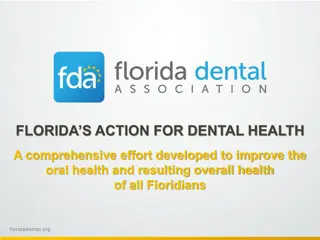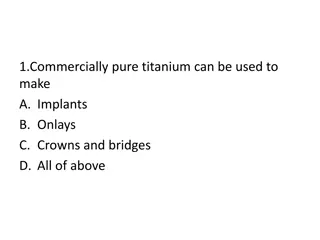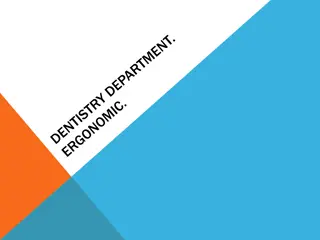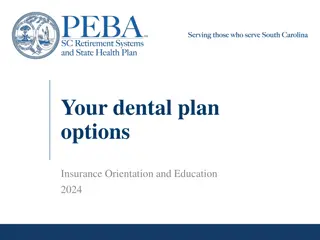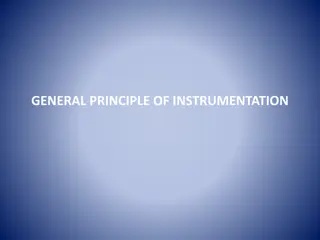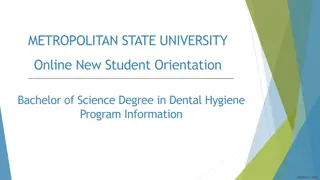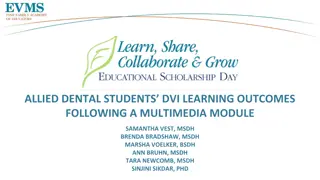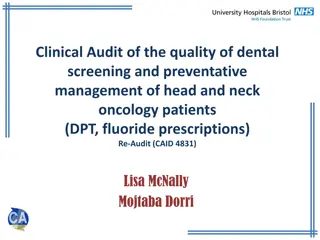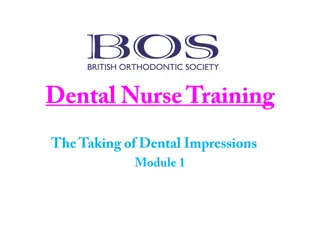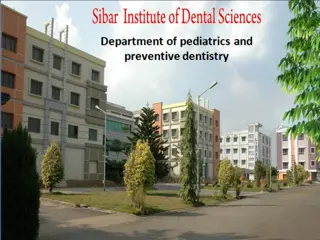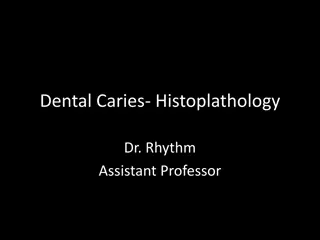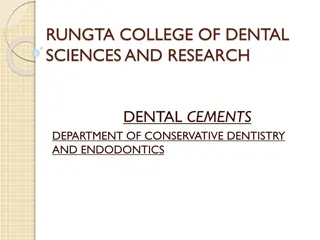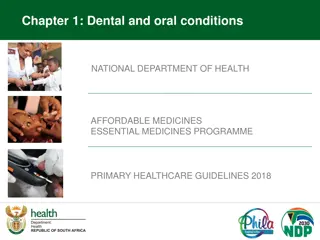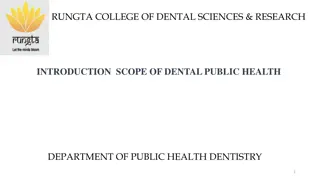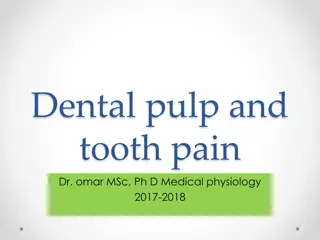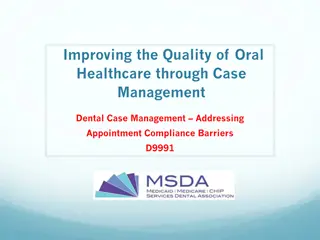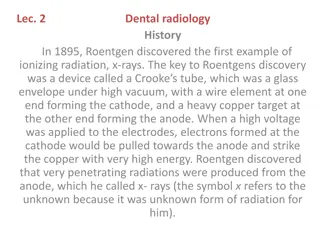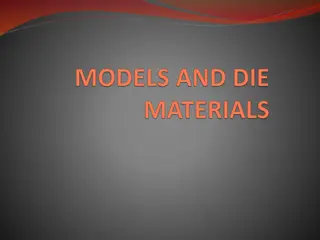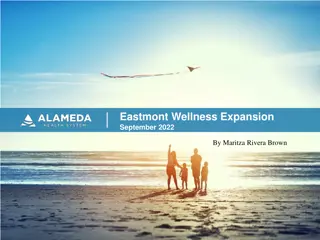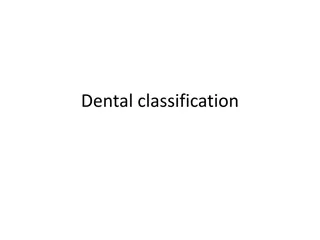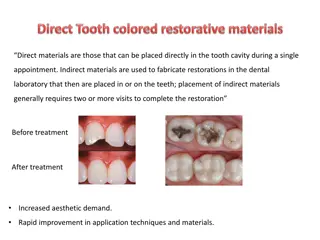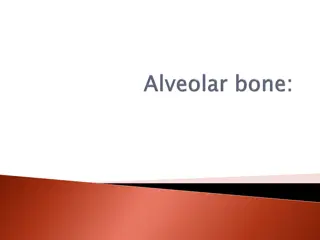Challenging Scenarios in Dental Implantology
Dental implantology presents unique challenges related to patient factors, surgical sites, and operator skills. Issues such as alveolar deficiency, local blood supply, and operator expertise must be carefully addressed for successful outcomes in oral rehabilitation with dental implants.
Download Presentation

Please find below an Image/Link to download the presentation.
The content on the website is provided AS IS for your information and personal use only. It may not be sold, licensed, or shared on other websites without obtaining consent from the author. Download presentation by click this link. If you encounter any issues during the download, it is possible that the publisher has removed the file from their server.
E N D
Presentation Transcript
THE CHALLENGING SCENARIOS OF DENTAL IMPLANTOLOGY Presented by: Daniel Zhelev and Peter Chantov
INTRODUCTION Dental implantology is a dynamic science that practitioners are relying on for oral rehabilitation. Due to the higher success rate, dental care is turning more and more toward using implant-based oral prosthetics.
Patient-related factors Anxiety Allergy Smoke history Anatomical variations Implant site local challenges Local bone type Local topography The personal preference Time frame demand
Surgical site alveolar deficiency Intraoral clinical images showing bone deficiency at the vertical and horizontal levels leading to minimal gingival recession pertinent to the lower canine teeth.
A periapical radiograph showing remaining roots of a previously attempted dental extraction Accomplished implant placement
A radiograph of a 50-year- old patient showing limited vertical bone height to place dental implant. A periapical radiograph showing the short implant in situ and the crown placed in favorable status.
Local blood supply deficiency Sometimes, missing to identify cortical areas of poor blood perforates, especially in older patients, can be the reason behind the success or failure.
A 75-year-old female patient who was known to be diabetic that is controlled and followed by an endocrinologist. The clinical image shows alveolar bone local limited blood supply at the crestal level when compared to the buccal plate perforates.
OPERATOR-RELATED FACTORS Expertise Training background Operator s capabilities Personal interest to introduce new techniques Knowledge of data interpretation The presence of a supporting team The talent to adjust with the challenging case requirement
Narrow dental implant In locations of limited mesiodistal width, the ability to place an implant can be jeopardized by a lot of factors, such as the flap design, root angulation, coronal tilting, alveolar bone dimension, and operator s clinical skills to place an implant usually via one or two drilling sequences only, which can leave no room for corrections neither over preparation of osteotomy sites.
The challenge of onlay bone grafting A 33-year-old male patient presented with missing left central incisor for more than 6 years secondary to trauma.
A clinical intraoperative image of the previous case showing the flap raised and indicating an extremely poor alveolar bone horizontal width that prohibits the implant placement and switch the procedure to a local grafting using particulate allogenic graft with calcium sulfate carrier to improve the consistency and bulk.
Material-related factors Implant surface type Length, diameter Internal design External design Laboratory capabilities Managing challenges Images capabilities Surgical stents Radiographic imaging Cone beam CT scanning The proficiency to manage the time factor
This case is planned for multiple dental implants in the upper right maxillary region using surgical stent that was reviewed in the lab by a prosthetic team.
Dental wax-up and surgical stent fabrication The dental wax-up is a necessary tool used to plan dental implant treatment. It is not only used for estimating the exact location and size of an implant, it is used as well to plan orthodontic movement and future grafting sites. The application of the conventional laboratory surgical stent or CBCT-based stent might lead to the same result.
Cone beam scan application in dental implant therapy Part of the advancement in dental implantology care is represented by the use of cone beam CT scan (CBCT), the three-dimensional orientation is the key to success. A missing left second premolar that is challenged horizontally by crown tilting and pneumatized maxillary sinus.
A postoperative CBCT scan shows the previous case of proper implant location that is not violating the sinus or dental structures as confirmed by parasagittal and axial views.
A panoramic radiograph showing three implants placed at the right mandible region. The implants are placed at improper locations pertinent to each other, surrounding structure, future rehabilitation, and opposing occlusion. Not using proper surgical stent to guide the future rehabilitation plan might lead to such devastating results.
Three implants next to each other with improper relation pertinent to future rehabilitation and as a relation to the neighboring tooth structure.
Conclusion As the dental implantology science is growing very fast, the demand to perfectionism is becoming more challenging. The technical advancement in dental and medical care is continuously improving and producing ideas however, still a lot of doubts that one day technology might replace a human surgeon to operate on another human solely.
References: Schlee M, and Esposito M (2009) Aesthetic and patient preference using a bone substitute to preserve extraction sockets under pontics Barber HD, Betts NJ (1993) Rehabilitation of maxillofacial trauma patients with dental implants Steiner GG, Francis W, Burrell R, Kallet MP, Steiner DM, Macias R (2008) The healing socket and socket regeneration Sonick M, Hwang D (2007) Tooth extraction an opportunity for site preservation. Contemp Esthetics Smith LP, Ng M, Grubor D, Chandu A (2009) Outcomes of dental implants placed in a surgical training programme Present S, Levine RA (2010). Single maxillary tooth restoration Peter K (2004) Alveolar ridge reconstruction with preprosthetic surgery Manikandan R, et al (2013) Implant surgical guide Su-Gwan Kim (2011). Clinical Complications of Dental Implants, Implant Dentistry - A Rapidly Evolving Practice



